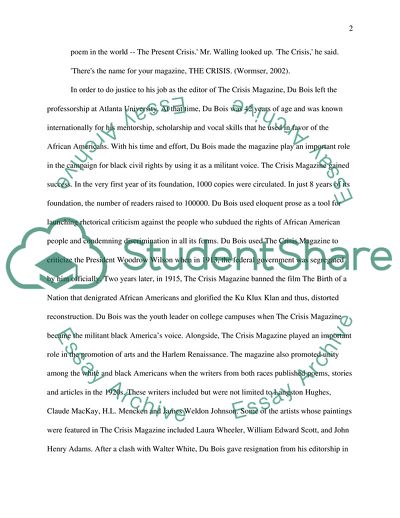Cite this document
(Crisis as the Voice of the National Association for the Advancement of Colored People Case Study Example | Topics and Well Written Essays - 1750 words, n.d.)
Crisis as the Voice of the National Association for the Advancement of Colored People Case Study Example | Topics and Well Written Essays - 1750 words. https://studentshare.org/history/1756421-naacp-and-the-crisis-how-the-crisis-was-the-voice-of-the-naacp
Crisis as the Voice of the National Association for the Advancement of Colored People Case Study Example | Topics and Well Written Essays - 1750 words. https://studentshare.org/history/1756421-naacp-and-the-crisis-how-the-crisis-was-the-voice-of-the-naacp
(Crisis As the Voice of the National Association for the Advancement of Colored People Case Study Example | Topics and Well Written Essays - 1750 Words)
Crisis As the Voice of the National Association for the Advancement of Colored People Case Study Example | Topics and Well Written Essays - 1750 Words. https://studentshare.org/history/1756421-naacp-and-the-crisis-how-the-crisis-was-the-voice-of-the-naacp.
Crisis As the Voice of the National Association for the Advancement of Colored People Case Study Example | Topics and Well Written Essays - 1750 Words. https://studentshare.org/history/1756421-naacp-and-the-crisis-how-the-crisis-was-the-voice-of-the-naacp.
“Crisis As the Voice of the National Association for the Advancement of Colored People Case Study Example | Topics and Well Written Essays - 1750 Words”. https://studentshare.org/history/1756421-naacp-and-the-crisis-how-the-crisis-was-the-voice-of-the-naacp.


